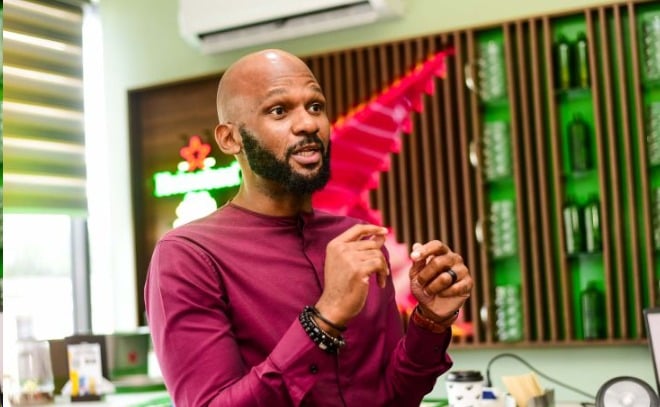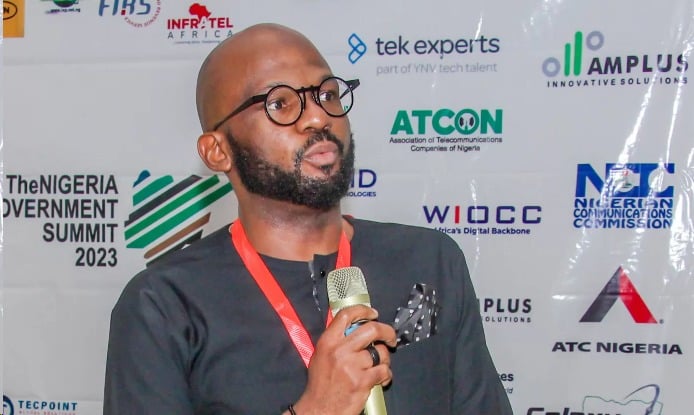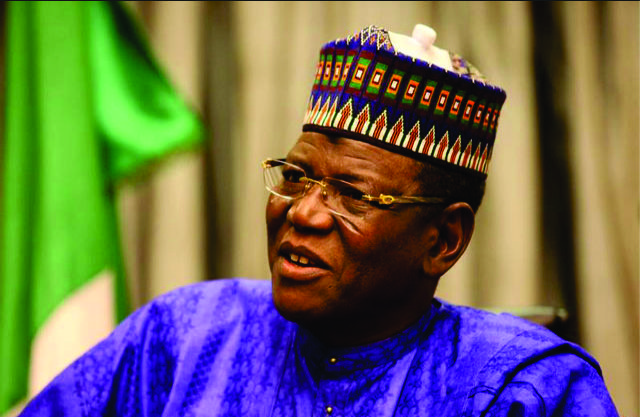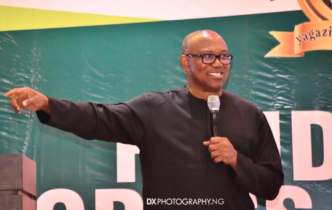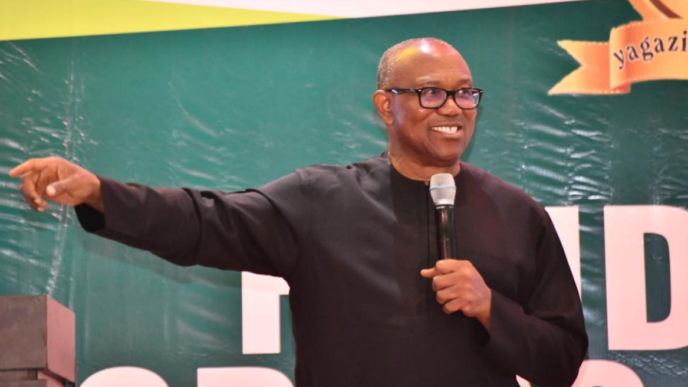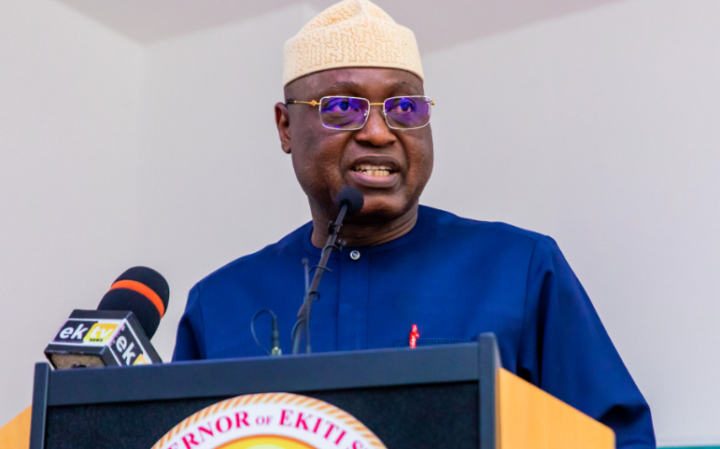At the Technology Times Thought Leadership Series, Soji Maurice-Diya, the CEO of NatCom Development & Investment Limited, trading as ntel, unveils the company’s Q1 2026 market re-entry plan anchored on an infrastructure-light MVNO model and renewed vision to drive broadband inclusion and innovation in Nigeria’s telecoms landscape.
Since 2004, the Technology Times Thought Leadership Series has continued to serve as a platform for influential industry voices to shape conversations around Nigeria’s digital transformation. Soji Maurice-Diya’s session provided a compelling preview of ntel’s (formerly NITEL) return and its commitment to inclusive growth, innovation, and policy advocacy that will define the next chapter of Nigeria’s telecoms industry.
Technology Times: Let’s first talk about the Nigerian telecoms industry. How would you describe the current state of the industry as it transforms into another phase of evolution?
Soji Maurice-Diya: Sure. Most of us are aware that the telecoms industry in Nigeria, as we know it today, started almost 25 years ago. It has witnessed significant and impactful growth, particularly in supporting Nigeria’s broader commercial ecosystem.
Advertisement
Over the last 25 years, one would argue that the sector has become a mature market, and there’s a lot more stability. If you recall, in the early years, there were several players—some started, some stopped—but now, there’s a bit more stability.
I think the likes of MTN and Airtel have shown long-term commitment to the industry, and Glo too, and continue to make a positive impact in terms of its contributions to our GDP as a country.
Technology Times: Let’s talk about policy and regulation. What kind of policy interventions do you think are needed to support growth and development in the industry?
Advertisement
Soji Maurice-Diya: Some of it is already happening. The honourable minister of communications, innovation and digital economy has played a key role in creating a bit more economic capacity with the tariff relief that happened late last year and early in 2025.
That has given a bit more justification for further investment in the industry. In addition, there needs to be more synergy between the communications ecosystem and the financial sector. You will find that a lot of telecoms companies recognise the inherent value in supporting financial services.
To the extent possible that there is a bit more closer working relationship between both ecosystems to birth what I think is the next chapter that can help define the broader ecosystem in the next 25 years.
Telcos have to be able to play more than just a communication or connectivity role and become a digital platform that can enable and unlock a lot of additional opportunities.
Advertisement
Technology Times: That takes me to the next question. There are lots of challenges, so what do you think can be done to deepen the digital ecosystem and also the connectivity?
Soji Maurice-Diya: You know the challenges as well as I do, some of which are being solved with the regular interventions.
The Critical National Infrastructure Bill that was passed last year, and has been, I think, enforced in terms of protecting all telecommunication assets to make sure that you minimise incidents of vandalism, theft and just general civil unrest when it comes to those assets.
I think, in addition to that, there are probably other things that one needs to evaluate. Dynamic pricing and allowing a bit more flexibility in the tariff regime might be one. I think in addition to it, there are tax incentives. Again, I think the government has played a role in creating some reduction in tax-based taxes around withholding tax. A little bit more can be done there. I think there are also areas of opportunity looking at sustainability and more green energy solutions.
Advertisement
I do think the Federal Government has taken a bold step in putting its own stick in the ground with regards to rural connectivity with the 7,000 towers that the Federal Government wants to deploy in the next five years as well as the 90,000-kilometre fibre projects, which again is also being spearheaded by the Federal Government of Nigeria.
I think those, while they’re not necessarily policy interventions, I think that they’re welcome interventions that will help. We at ntel will play a role not only by supporting the ecosystem but also creating a couple of interesting products that we think will also further broaden and deepen connectivity and improve telecommunication services across the country.
Advertisement
Technology Times: In terms of balance, what do you think can be done to ensure a balance between the regulator and innovation?
Soji Maurice-Diya: I think that’s a very good question because you know a lot of times regulation comes on the back of innovation. So a lot of times you’ve got to innovate first and people test boundaries as long as especially where there’s ambiguity as to what a particular innovation allows or isn’t allowed to do. So I think the government should continue to allow for innovation first, and then regulate on the back-end because you can’t regulate everything.
Advertisement
I think when you over-regulate, you stifle innovation. So, I think you start by allowing innovation to happen, and as long as you keep your pulse on what’s going on, I think you’ll find that there are actually opportunities. And we’ve seen that in areas of cryptocurrency, not just in Nigeria but globally. You know, a lot of people were very sceptical, but they allowed innovation to happen, and they stepped in at the right time and then curtailed some of the excesses as time goes by.
So I think you know to the extent that the government can play a monitoring role rather than kind of prescribing or proscribing every single form of innovation. I think that’s one thing that can help.
Advertisement
Technology Times: So, in terms of global telecoms trends such as the spectrum liberalisation, infrastructure sharing and emerging 5Gs, what influence do you think Nigerian markets can play in all of this structure?
Soji Maurice-Diya: Needless to say, Nigeria, as you know, has one of the world’s six or seven largest populations. One in five black people is Nigerian. I think the innovation in the telco space is about much more than connectivity, right? So there’s opportunities for harnessing what has happened in what I would just call basic commercial or commerce into places like healthcare, education and logistics, and I think to the extent that one can harness it, it can also provide a lot of learning for the rest of the world. It can also help with even areas of security. I mean, that’s as simple as that is.
I think all of those innovations, first and foremost, have an immediate effect on the economies of the business, right? So it’s allowing for more infrastructure sharing and cost sharing, which should ultimately reduce the cost to serve and hopefully some of those savings get passed on to the end users.
I think in addition to that, they lay the foundation where additional returns can be deployed into emerging technologies, AI, and machine learning. More importantly, I think it now begins to unlock the opportunities that this industry has to make an impact in alternative or ancillary industries, healthcare, education, and even logistics. I think there are opportunities that can be explored as the ecosystem becomes broader and more mature.
Technology Times: So what role do you think the indigenous infrastructure and local content can play in building a resilient and inclusive digital economy?
Soji Maurice-Diya: I’m happy you used the word local content because a lot of times we confuse indigenous ownership with promoting local content. The sustainability of the industry is predicated on the ability to localise as much as possible. In the early days, it was understandable that a lot of our capacity was built from outside of the country, but over time, like I said in a 25-year industry, there’s now opportunities to start to localise those things.
I think if you think about what’s happening right now with regards to power, with regards to infrastructure, and I think with regards to people who are willing to take intelligent bets on local content and capacity building, I think there’s opportunities there.
Again, this is an industry that’s matured over the last 25 years. If you look at the pioneers, if you look in terms of boots on the ground, you had a lot more expatriate community that was helping to build the ecosystem. Over time, that has evolved and you see a lot more local capacity building. I think the next phase of that is not just in terms of people, but in terms of technology and in terms of assets that are built. At some point, we were looking at a lot more local device manufacturing.
I think that’s still an opportunity that needs to be stretched. I think in terms of the backbone of the industry, there’s a lot of opportunity to further localise content and delivery. I think opportunities like the 3MTT, by again, the Federal Ministry of Communications, Innovation and Digital Economy is about that.
It’s about trying to create a more sustainable industry that doesn’t rely as much on external influences. External influences can be expensive and sometimes not necessarily committed to the long-term growth of the industry. So I do think it’s headed in the right direction.
The policies have to just continue to support it. This battle between how do you marry innovation versus regulation. It’s one thing for the government to just come and say you know what we can’t have more than 10% foreign content. I don’t think that’s necessarily what needs to happen. I think each aspect of the value chain can be evaluated and where there’s a need based on innovation the government can come and say you know what, this particular industry is mature enough or this particular sector in the industry is mature enough that you can then impose some kind of regulation that says you don’t need to be bringing civil engineers from wherever in the world and you can start to protect a bit more over the long term. That’s it.
Technology Times: So are there policies or incentives you think can be done to attract long-term capital into the telecoms industry and also broadband infrastructure?
Soji Maurice-Diya: I think the whole ecosystem itself will benefit from the drive that’s already ongoing. I think evaluating tariffs, evaluating the opportunities for this industry to anchor and support, you know, ancillary industries. So investors are savvy and they’re unemotional about their investments. Wherever they see long-term value, they will deploy capital. I think in Nigeria’s particular case, you’re seeing some of that. The tax reform, ability to generate or to expropriate your capital upon the exit of your investments, is helping.
FX stability is also another critical aspect. But over and beyond that I think additional things that can be explored is evaluating what the value this industry brings, and making sure that it’s not undermined in sort of its return. So if there are ways in which it’s unlocking value in other places as well you know there should be some incentives.
I think you could even look at additional tax incentives especially when it’s long term. You can tie it to long-term targets so that people aren’t just in and out. So I think investors are savvy and unemotional about where their investments go.
Ultimately investors want to be able to put their capital in a place that they’re reasonably assured of their ability to take it out. I do think the Federal Government has made a lot of strides in creating a more positive environment. The ability to repatriate funds upon completion of an investment is helpful.
FX stability and some tax incentives. I think the government could go a bit further in protecting long-term investments and actually tying targets, financial targets or long-term investments to additional incentives. I think the government could explore a bit more of a more friendly sharing formula when it comes to the benefits that this industry brings to other industries: financial services, education and the like. And ultimately I think as long as we head in this direction I think there will be additional investments.
There are already a lot of additional I think over the last couple of years there’s probably more interest in the Nigerian telco ecosystem than there was in the 10 years before.
Technology Times: Now we’ll go back to ntel where you head? You’re coming back in the first quarter of 2026. So what’s the vision of ntel?
Soji Maurice-Diya: So ntel, as many might know, was the legacy carrier, Nitel, that transformed into its current form ntel in 2015 vis-a-vis the privatisation. It made a run, a decent run, at penetrating the telco space over the last, you know eight, nine years and a couple of years ago did have to pause. In coming back we’re exploring a very very light digital play.
I’m not at liberty to share everything at this point in time, but our view is that there is still a role to be played by the likes of ourselves to innovate to create very niche products that meet the needs of a teeming and young population. And that we think there are other tie-ins that are value-added and that ultimately by
the time we create the bundle of products and services, that it will excite and incentivise Nigerians to give us a try.
Technology Times: For you to come back it means there should be a gap somewhere.
Soji Maurice-Diya: Yes.
Technology Times: So, what gap do you intend to fill up?
Soji Maurice-Diya: Innovation. We think that there’s a lot of innovation that’s yet to happen in this space. I mean, with all due respect to our partners and our competitors in the ecosystem, we don’t think there’s been nearly enough innovation in the last few years.
We think around financial services, around value-added services more broadly speaking that there’s some opportunities to pick up niches along the lines. You know for us to go and play in the 100 million subscriber game, that’s not what we’re about. We’re about to find a very small subset of subscribers, and serve them extremely well, and we think the future will kind of take care of itself if we’re able to do that very well.
Technology Times: Okay with your appointment signalling a new era for ntel. What role would your organisation play in terms of youth engagement and also digital inclusion in driving the brand’s comeback?
Soji Maurice-Diya: So I mean, Nigeria has a young population. I don’t think anybody needs to tell us that between three and four million Nigerians turn 18 every year, and we think that’s an opportunity where there’s you know there aren’t as many incumbents in their minds, and that if we’re able to tap into that we can deepen our penetration. We can offer services that we think speak to their needs specifically and ultimately grow with them.
So it is kind of where we want to play. Undoubtedly, our focus is really on taking advantage of new and emerging populations in the ecosystem.
Technology Times: Looking ahead, what is your personal vision for ntel’s long-term legacy in shaping Nigeria’s telecoms industry innovation story?
Soji Maurice-Diya: I think having been a legacy company, it has a lot of institutional and emotional attachments, if you will, and we think that we owe it to ourselves to give it another shot an opportunity to implant itself into the hearts and minds of Nigerians by creating what we think are quite important but overlooked sectors and segments of the industry. Our legacy is that we in 10, 15, 20 years or 25 years were able to say that we’ve been able to provide services that have truly differentiated ourselves in the marketplace, but also made an impact.
If I look at it through two different lenses, we think there are two aspects of the business that can continue to serve the telco ecosystem. ntel has quite a bit of legacy infrastructure that we think can be leveraged and shared in the industry.
But more importantly, I think in terms of legacy is the ability to play in the digital space. We think that there’s some opportunities for us to contribute and make not just a direct impact in the lives of our subscribers, but also generate additional innovation in the broader ecosystem. We think that in 10, 15, 20 maybe even 25 years we’ll be able to say we have millions of subscribers that have benefited and have used our service system to improve their own lives and their own lots and that we’ve also played a role in being a partner to the rest of the ecosystem, supporting everybody else to make sure that that that that industry continues to be sustainable.
Technology Times: As a telecoms leader what kind of policy and market environments do you think Nigeria needs to compete regionally and globally over the next decade?
Soji Maurice-Diya: I think the first thing is a fair playing ground for all players. The ecosystem has to be able to see that there aren’t any preferential treatments being handed out to different players. We have players that are quite dominant, and there’s nothing wrong with how they’ve gotten there, but to give an opportunity to incoming or to new entrants to be able to support.
I think that the market is big enough to sustain a multiplicity of players and we hope to be able to play in that role. So I think the free market environment as well as the continued liberalisation of the economy are two of the major things I would suggest that the government continues to do.
Technology Times: Thanks Oji for being here.
Soji Maurice-Diya: Thank you very much for having me.
